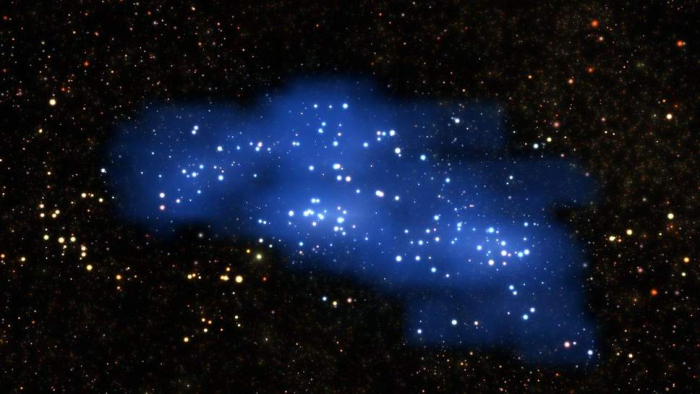The vast cluster is the biggest and most massive structure found at such a remote distance. It is so far away that we are seeing it when the universe was at its very beginnings, just two billion years after the Big Bang.
Seeing such a huge structure in the early universe came as a shock to scientists who expected that such massive structures could only be formed in the universe as it exists today.
"This is the first time that such a large structure has been identified at such a high redshift, just over 2 billion years after the Big Bang," explained the first author of the discovery paper, Olga Cucciati. "Normally these kinds of structures are known at lower redshifts, which means when the Universe has had much more time to evolve and construct such huge things. It was a surprise to see something this evolved when the Universe was relatively young!"
The structure, which is known by scientists as Hyperion, was spotted by a team of scientists who used the European Southern Observatory's Very Large Telescope to peer into the early universe and look for galaxies forming. It was then they spotted Hyperion, a colossal mass that is more than a million billion times that of the Sun.
It is not only huge but very complex. Hyperion is made up of at least seven high-density regions, which are strung together by threads of galaxies. That structure is different to the kind of superclusters we usually see closer to us, even though the size is similar.
"Superclusters closer to Earth tend to a much more concentrated distribution of mass with clear structural features," explains Brian Lemaux, an astronomer from University of California, Davis and LAM, and a member of the team behind this result. "But in Hyperion, the mass is distributed much more uniformly in a series of connected blobs, populated by loose associations of galaxies."
The difference is probably a consequence of the fact that the closer by superclusters have had billions of years of being pushed into denser regions by galaxies. Hyperion, which is much younger, has been subject to that process much less.
Eventually, Hyperion will probably evolve into something similar to those structures: the kind that make up the Sloan Great Wall, or the Virgo Supercluster in which our own galaxy sits. Understanding how that process happens could allow us to peer into the past of our own galaxy and understand how it might have formed.
"Understanding Hyperion and how it compares to similar recent structures can give insights into how the Universe developed in the past and will evolve into the future, and allows us the opportunity to challenge some models of supercluster formation," said Cucciati. "Unearthing this cosmic titan helps uncover the history of these large-scale structures."
The Independent
More about: science
















































